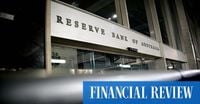The Reserve Bank of Australia (RBA) is poised to cut interest rates as early as May, following a series of economic shifts and uncertainties in global trade. The RBA's monetary policy board has indicated that a reduction in rates could happen after the federal election, contingent on the latest inflation data and the impact of the ongoing trade war initiated by U.S. President Donald Trump.
Minutes from the RBA's April 1 meeting revealed a cautious optimism regarding inflation, with predictions that the preferred measure of underlying inflation will fall below 3 percent in the March quarter. This anticipated decline is set to be confirmed when the consumer price index (CPI) is published on April 30, 2025.
Market analysts are already reacting to these developments, with the interest rate futures market forecasting a drop in the official cash rate to 2.9 percent by the end of 2025. This projection suggests that the RBA may implement five additional rate cuts of 0.25 percent throughout the year.
The RBA board minutes also expressed concern over the potential risks to Australia's $11.3 trillion housing market. The board noted that a series of rate cuts could lead to households taking on excessive debt, which would in turn drive up home prices and weaken lending standards. The minutes stated, "Historical experience both in Australia and abroad suggested that periods of lower interest rates can coincide with riskier borrowing activity, a rapid increase in house prices and, at times, a relaxation of lending standards."
In light of these concerns, the RBA is closely monitoring the evolving situation. The board acknowledged that while financial conditions had eased slightly due to the previous rate cut in February, they still remain restrictive.
Adding to the complexity, the Albanese government has introduced measures that could further stimulate borrowing. One significant change is that mortgage lenders will no longer need to consider student debts in their mortgage serviceability calculations. For instance, a graduate homebuyer with a pre-tax income of $75,000 could borrow an estimated $26,800 more, while someone with a $125,000 income could see an increase of $95,000 in borrowing capacity.
Moreover, first-time home buyers will now only need a 5 percent deposit, with the government guaranteeing 15 percent of their mortgage. This policy is expected to significantly boost buyer demand, potentially leading to a surge in home prices.
As the RBA prepares for its next meeting on May 20, economists predict that the central bank will likely cut rates by 25 basis points, with some suggesting a possibility of a more aggressive 50 basis point cut. The uncertainty surrounding global trade, particularly following Trump's recent tariff announcements, has heightened expectations for a rate adjustment. The tariffs, which affect over 70 countries including Australia, have introduced new challenges for the Australian economy.
Goldman Sachs economist Andrew Boak noted, "Our base case remains for the RBA to cut 25 basis points in May, followed by sequential cuts in July and August." The upcoming CPI data and labor force statistics, due for release shortly before the RBA meeting, will be crucial in shaping the bank's decision.
Consumer confidence has already been shaken by the escalating trade tensions, as evidenced by the ANZ-Roy Morgan index, which dropped 2.6 points last week to 84.2—significantly below the long-term average of 109.7. ANZ economist Sophia Angala remarked that the decline likely reflects a more pessimistic outlook following the tariff announcements.
Despite these challenges, the RBA remains committed to its dual mandate of price stability and full employment. Governor Michele Bullock emphasized the importance of monitoring how current uncertainties affect household and business decisions in Australia.
With the federal election scheduled for May 3, the RBA will have a clearer understanding of the domestic and international landscape when it reconvenes. Depending on the economic data released in the days leading up to the meeting, the central bank's approach may need to adapt to the evolving situation.
The RBA's balancing act is underscored by the conflicting pressures of stimulating economic growth while ensuring financial stability. As it stands, market expectations are firmly leaning toward a rate cut next month, and economists warn that further deterioration in global conditions may necessitate a more aggressive monetary response.
As Australia navigates these turbulent economic waters, the implications of the RBA's decisions will be felt across households and the broader economy, highlighting the interconnectedness of local and global financial systems.




